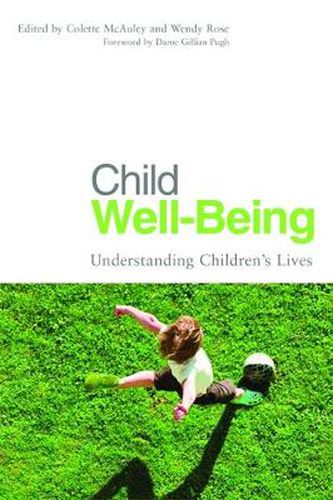Readings Newsletter
Become a Readings Member to make your shopping experience even easier.
Sign in or sign up for free!
You’re not far away from qualifying for FREE standard shipping within Australia
You’ve qualified for FREE standard shipping within Australia
The cart is loading…






Child well-being, which covers everything from family relationships to their material well-being, is now increasingly being talked about in policy and practice nationally and internationally. However, a lack of clarity remains about what the idea really means and how it can help children. This book brings together contributions from international experts in order to define child well-being and to further understand how it can improve children’s lives. Issues covered include how the idea is being used in government policy and practice in the UK and USA, how children can contribute to the understanding of child well-being, recent advances in the exploration of indicators and measures of well-being, and the importance of context in making comparisons. There is a concluding chapter that explores whether child well-being is a useful concept in understanding children’s lives, whether it positively contributes to policy and practice, and the value of international comparisons. This edited collection is essential reading for all those involved in understanding children’s lives and who have responsibility for improving them, including practitioners, policymakers, students and academics.
$9.00 standard shipping within Australia
FREE standard shipping within Australia for orders over $100.00
Express & International shipping calculated at checkout
Child well-being, which covers everything from family relationships to their material well-being, is now increasingly being talked about in policy and practice nationally and internationally. However, a lack of clarity remains about what the idea really means and how it can help children. This book brings together contributions from international experts in order to define child well-being and to further understand how it can improve children’s lives. Issues covered include how the idea is being used in government policy and practice in the UK and USA, how children can contribute to the understanding of child well-being, recent advances in the exploration of indicators and measures of well-being, and the importance of context in making comparisons. There is a concluding chapter that explores whether child well-being is a useful concept in understanding children’s lives, whether it positively contributes to policy and practice, and the value of international comparisons. This edited collection is essential reading for all those involved in understanding children’s lives and who have responsibility for improving them, including practitioners, policymakers, students and academics.